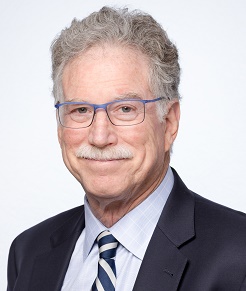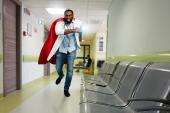Conversations in Cardiology: Who Should Do TEE in Structural Heart Cases?
A turf battle with anesthesiologists is afoot at their center, one cardiologist says, asking how others divide up imaging duties.

 Morton Kern, MD, of VA Long Beach Healthcare System and University of California, Irvine, often engages his colleagues via email in brief, informal dialogue on clinically relevant topics in interventional cardiology. With permission from the participants, TCTMD publishes their conversations for the benefit of the cardiology community. Your feedback is welcome—feel free to comment at the bottom of the page.
Morton Kern, MD, of VA Long Beach Healthcare System and University of California, Irvine, often engages his colleagues via email in brief, informal dialogue on clinically relevant topics in interventional cardiology. With permission from the participants, TCTMD publishes their conversations for the benefit of the cardiology community. Your feedback is welcome—feel free to comment at the bottom of the page.
Kern:
I received a concerning question from a structural heart disease program. Should transesophageal echocardiography (TEE) move out of the hands of cardiology to anesthesiology for these cases? Here's the story.
Earlier this year we had a couple of structural heart disease (SHD) cases with oropharyngeal bleeding that needed intubation and ventilation. Anesthesiology blamed cardiology and vice versa.
The new cardiac anesthesiologists feel that they—and not the cardiology structural echocardiographers—should be responsible for TEE probe insertion, because they are responsible for the care of the airway. They comment that they are liable for patient care issues in this matter and are requesting this become the practice for patient safety and liability issues.
Our echo attendings point out that this was a unique situation and there have been no similar issues over the last 15 years. The echocardiographers feel they should be responsible for performing the case from probe insertion to removal, and that their practice is safe and should be judged over the years of problem-free TEE procedures, not just a rare grouping of events. They spend hours in the case and want to perform the case from beginning to end, unlike anesthesiologists who also cover other rooms and often leave their residents with the patient. They feel it unfair that an unfortunate group of complications over a short time period should suggest that their practice is unsafe after years of performing without major issues. Additionally, liability is shared by everyone who performs the case in some way or another.
This action seems to be a territory battle coming from the new cardiac anesthesiology group, as this issue was never raised in the past. Such action hurts cardiology when trying to build an interventional echo team for our structural heart program.
My question to the group is: Do you know or are aware of other academic or community centers that have given TEE to the anesthesiologists? We know of no academic centers that do not have their cardiology echo teams performing TEE probe insertion.
Would you please comment on your TEE structural heart practice? Thanks from a troubled colleague.
Here’s my response . . .
Dear Troubled,
As I have had past experience in turf battles, it seems to me anesthesia is overstepping (again). For the safety issue, the way to proceed is to conduct an open review of the complications, address what happened, and move on without yielding to the ridiculous request to give up a practice in which your experience likely exceeds theirs and of which you are board certified in echo and they are not. In some places, turf battles must be adjudicated at higher levels (ie, the dean or CMO or CEO) since most of the time it is about billing and fees. Collect the data in support of an upcoming fight if it goes that far.
Aaron V. Kaplan, MD (Dartmouth Hitchcock Medical Center, Lebanon, NH):
From my combined perspectives as a left atrial occlusion (LAAO) device implanter who runs an academic program and as chief medical officer for Conformal Medical, which is running a large LAAO RCT: as with all we do, clinical excellence comes from good training and a focus to develop and maintain skills. There are clearly cardiac anesthesiologists who have the appropriate tools to support LAAO cases well. In addition the American Society of Anesthesiologists has a formal accreditation process.
N.B.—These comments may be LAAO specific, I do not have the firsthand experience to discuss TEER, which has a hemodynamic component that LAAO does not have.
This situation sounds like a turf battle to me.
Pinak Bipin Shah, MD (Brigham and Women's Hospital, Boston, MA):
Our structural heart intraprocedural TEEs are performed entirely by cardiac anesthesia. We are fortunate to have a core group of cardiac anesthesiologists with a strong interest in structural heart procedures. They are national leaders in echo; therefore we are very comfortable with them managing the anesthesia and the TEE. We also have a tremendous group of cardiologists with interest in structural heart and they perform all of our preprocedure TEEs. The issue for us is that we do not have a good means of reimbursing our echo cardiologists to spend time in the cath lab, and it has not been worth it for them to do the TEE for the cases as it negatively impacts their productivity. There are definitely places that have figured this out: we are not one of them. At the end of the day, both our structural echo cardiologists and anesthesiologists are happy with this arrangement. But I will admit that we are fortunate that both groups are on the same page and this may not be the case everywhere.
Paul Sorajja, MD (Minnesota Heart Institute Foundation, MN):
There are plenty of practices that have cardiac anesthesia performing the TEE for guiding SHD procedures and they are excellent, with several of them established as KOLs in interventional imaging. Of course, there are also many practices that have CV doing it—ours is one—and we prefer it that way because those physicians also participate in the outpatient evaluation. When there is disconnect between who does outpatient evaluation versus those who do procedures, there can be problems that arise in the quality of the outpatient imaging in terms of whether or not they are informative of the approachability for our SHD procedures. We have seen issues with that in our clinical trials especially: TRILUMINATE is a great example of those limitations that arise from such disconnect.
Another issue is related to billing. My understanding is that the billing goes to whoever inserted the probe—perhaps a concern for some productivity-based practices.
In my opinion, both specialties are well capable of doing probe insertions.
Richard Wright, MD (Cardiology Advisor to the Medicare Relative Value Update Committee and Pacific Heart Institute, Santa Monica, CA):
For billing purposes Medicare forbids the attending anesthesiologist from billing both the supervision of the anesthesia AND the interventional echocardiography code, as these are done simultaneously and if billed by the same provider would be considered “double-dipping. ” It doesn’t matter for billing purposes who inserts the probe, so long as the provider who bills the interventional echocardiography portion of the procedure is manipulating the probe and providing real-time feedback to the interventionalist.
Kirk Garratt, MD, MSc (ChristianaCare, Newark, DE):
Interesting conversation, thanks for launching it, Mort. Others have made the point that either group can learn to do this work competently. We continue to use a noninvasive cardiologist as imager during LAAO and TEER cases. Handing it over to anesthesiology would be fine for LAAO, but none of our cardiac anesthesiologists have the necessary 3D imaging and hemodynamic assessment skills to handle the TEER cases. Most TEER cases are being done by our employed cardiologist team, and the current model creates some financial challenges. The productivity of a TEER case is good for the interventionalist, but it’s something of a hardship for the imager since she/he could generate many more RVUs doing other echo work in the roughly 2 hours of a typical case. If it was possible to develop the same level of skill among the cardiac anesthesiologists, who are paid to work for blocks of time, it would make financial sense to move that work to them.
Larry S. Dean, MD (University of Washington School of Medicine, Seattle):
All of our SHD procedural TEEs are done by cardiac anesthesiologists, which has been our approach since PARTNER I.
Frederick Welt, MD (University of Utah School of Medicine, Salt Lake City):
Mort, thanks for sending this. I think many others have made the point that cardiac anesthesiologists are often quite good at intraoperative and procedural TEE and practices have different arrangements, all of which can work. But that seems to miss the point of the original question. The issue is the wholesale shift of practice based on complications. None of us on this thread can adjudicate that issue without knowing the facts, but it seems draconian as it was portrayed. If there is a question of competence and outcomes, that deserves investigation and if necessary remediation. Furthermore, the comment that “Anesthesia now suggests they should insert probes for intubated patients for structural cases while cardiology should only insert for nonintubated or intubated ICU patients” doesn’t make sense to me. If it is an issue of competence, then it should apply to all patients. These issues of turf battles will never go away but should be called out for what they are.
The Bottom Line From Mort Kern
As for who should be doing TEE for SHD, Dr. Aaron Kaplan sums it up best: “clinical excellence comes from good training and a focus to develop and maintain skills,” which to me means that equally skilled operators with demonstrated expertise (credentials) can perform the procedure (eg, TEE). Given the comments of our colleagues above on how TEE for SHD is practiced, the roles of anesthesiology and cardiology are the result of history, habit, efficiency, and resources. The arguments in favor of one or the other operators then shift to the question of how the hospital/practice and the physicians perform the cooperative dance that makes best patient care, good operational sense, and appropriate reimbursements.



Comments